One of the strategies that I frequently hear in planning functional life skills programs is that the student doesn’t really need to learn about money, because he will probably use a debit card. And that works fine…until it doesn’t…like it didn’t for Kai.
Kai is a young man who likes to be independent and get out in the community. He is in high school and staff goes weekly on community outings. One week Kai went to the local department store and took a pair of jeans to the counter. He had $10 on his debit card and the jeans cost $45. So, when he went to the counter and put his debit card in the machine, the charge was rejected. Kai really wanted the jeans and didn’t understand why he couldn’t buy them with the debit card. He started to argue with the cashier. The behavior began to escalate and then his community coach came over and intervened with the situation.
Kai doesn’t need to know how to make change, and he can even use the debit card if he doesn’t know how to figure out the balance. But to be independent in the store, as he wants to be, he needs to know when something costs more than the money he has. Otherwise he may think the debit card is “magic” and he can buy anything with it.
Unfortunately I’ve seen this play out with adults with disabilities and credit cards. I’ve had students who completed credit card applications that were sent to him after he was 18. And he used them, running up a significant amount of debt without any understanding of the repercussions of that.
So, yes, students like Kai will probably use a debit card…just like all the rest of us. And we can teach him how to use it successfully…even if he can’t make change. We can at least teach him how to determine if he has enough money to make a purchase.
Don’t let your students be like Kai….giving students a debit card is not enough. I’m sharing tips for how to help them be successful. #specialed #spedtribe
How Do We Teach a student to Use a debit card?
So how do we teach a student to use a debit card successfully? It’s a little like teaching them to use the Next Dollar strategy. And as with any skill, we need to assess what the student knows, break the skill down into components and teach them systematically.
Now clearly some students are going to be able to figure out the price and keep a balance sheet on their debit card. Those students probably are going to be able to use many different methods of payment. But what if you have a student who has difficulty remembering the value of coins and adding, but he or she can count? Then that student can learn to use next dollar or a debit card. Here’s the some steps and tips.
#1 – FIND THE PRICE
The first step in students being able to use a debit card is for them to know how to find the appropriate price. This sounds pretty basic, and it is. But if you can’t identify the price, you really can’t move forward.
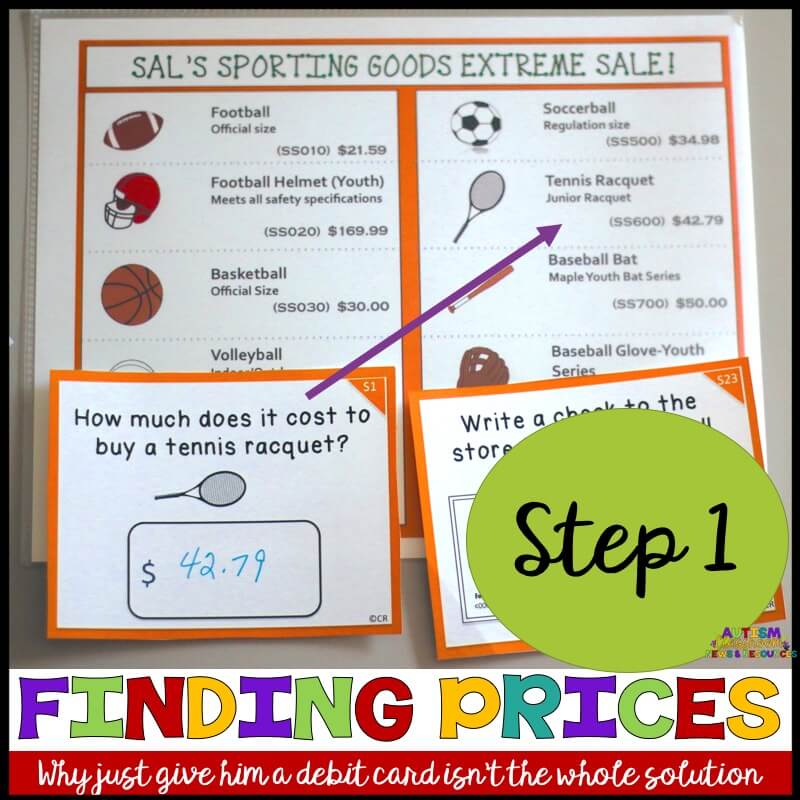
TO TEACH IT….
- 1Use catalogues and sales flyers. Students circle the prices.
- 2Put price tags on leisure or reinforcer items in the classroom. Then students can engage with them when they can tell you the price.
- 3Use resources like my Economics of Shopping stores to have students identify how much things in the catalogs cost.
#2 – STATE THE NUMBER OF DOLLARS IN THE PRICE
Next, in addition to locating the price, the students need to be able to state how many dollars are in the price. Not just read off the price, but knowing how many dollars, because we are going to teach them to count $1 UP from that number.
To teach it….using the same resources above, have them circle the dollar number and state the number of dollars.
#3 – FIND THE PRICE AND CARD BALANCE ON A NUMBER LINE
Next, in addition to locating the price, the students need to be able to tell us whether their price is more or less than the amount on their card. You can use a number line to help them see this. Have them circle the price on the number line. Then circle their balance on the line. You can include or not include the cues to help them determine which is more or less.
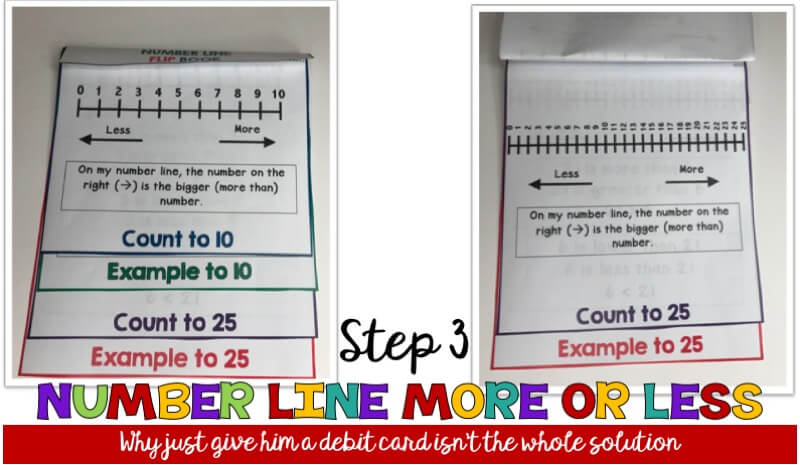
Click to Download the Number Line Free in the Resource Library
#4 – PRACTICE
Finally, students have to practice this skill. They can practice in class and eventually practice in the community.
In class, students could use the tasks like the file folder below. From the Shopping at the Appy Store set, the students are given a “gift card” with a specific balance. They then have to determine which apps they have the money to buy. There are worksheets in addition to the file folder that the students can use. And students who are able can practice purchasing multiple apps in one purchase and determining the balance remaining on the gift card after their purchases.
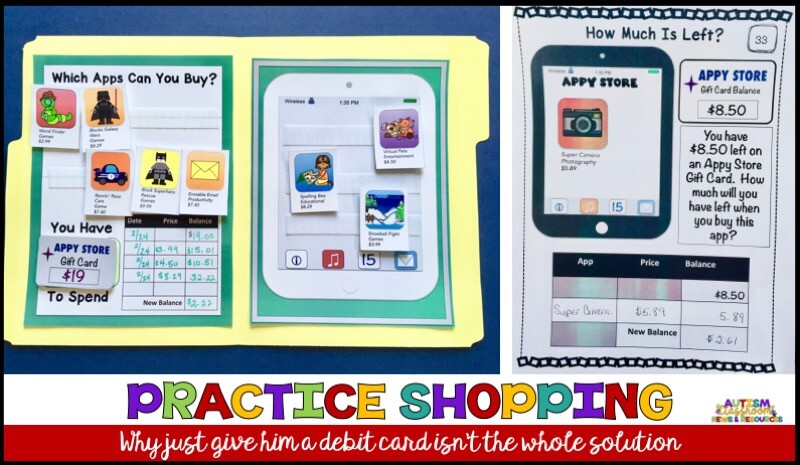
They can also complete the worksheets for using a debit card based on the Economics of Shopping stores like the ones below. These are differentiated stores, so beginners can use the stores that have no change in the prices. More advanced users can use the stores with more complex pricing. Each set of stores has a debit sheet worksheet in addition to the task cards and other tools in the set.
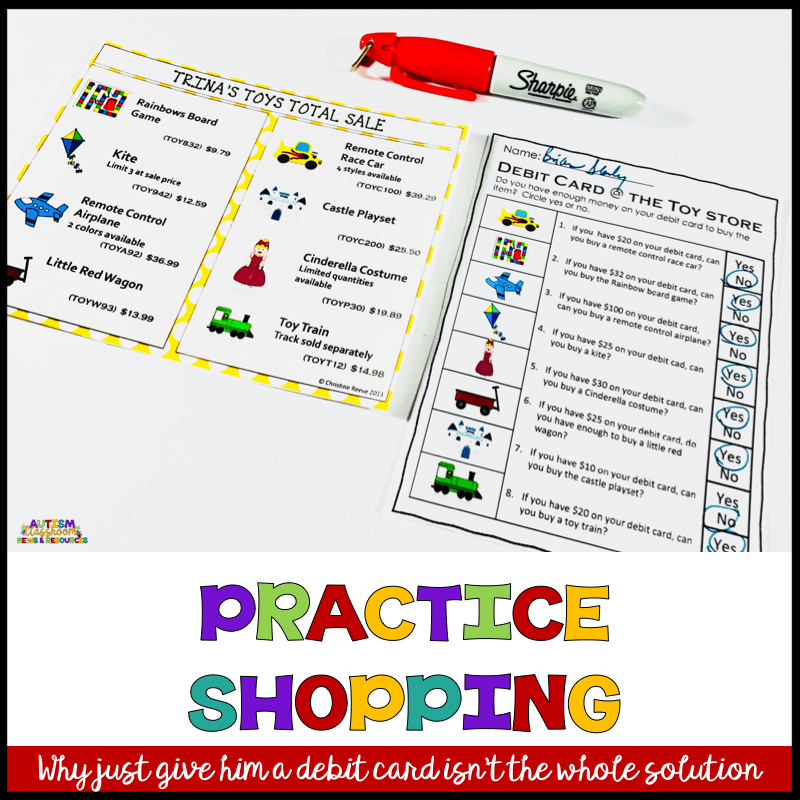
And finally, make sure that you practice with your students out in the community. Debit cards are a hard thing to negotiate with parents, but you can use gift cards in the same way to get started.
So, don’t let your student be like Kai and have a meltdown because he thought the debit card would buy him something that cost more than he had. Teach them to use debit cards responsibly to build their independence in their communities.
Looking for the products mentioned in this post? Just click the pictures below to check them out.


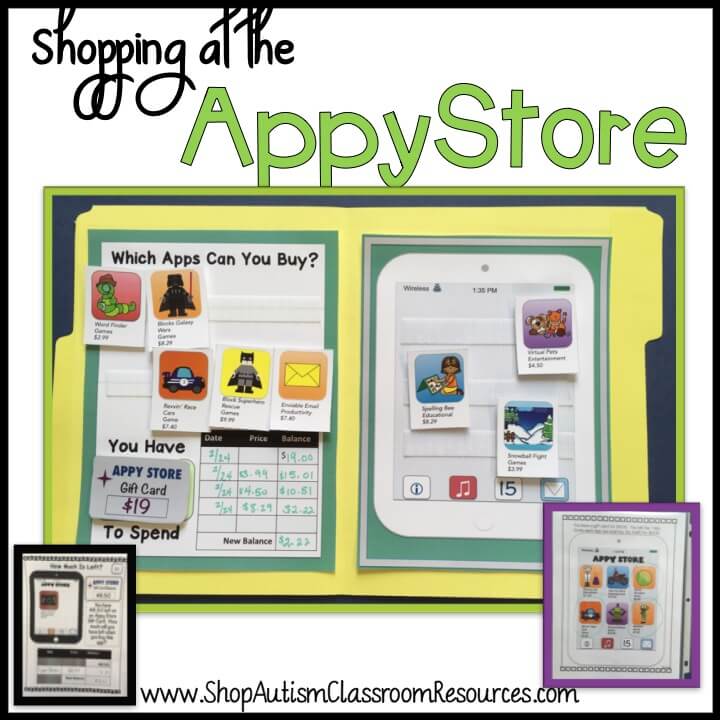



![Summer resources to help survive the end of the year in special education [picture-interactive books with summer themes]](https://autismclassroomresources.com/wp-content/uploads/2018/05/SUMMER-RESOURCES-ROUNDUP-FEATURE-8528-768x768.jpg)

